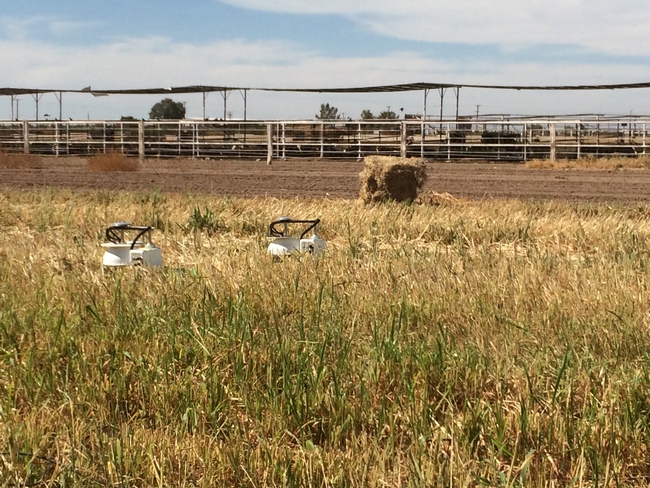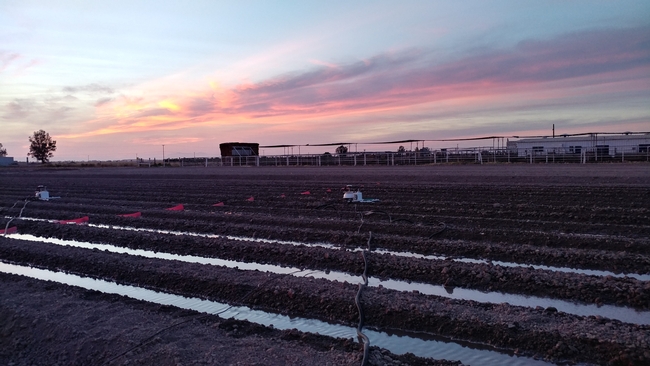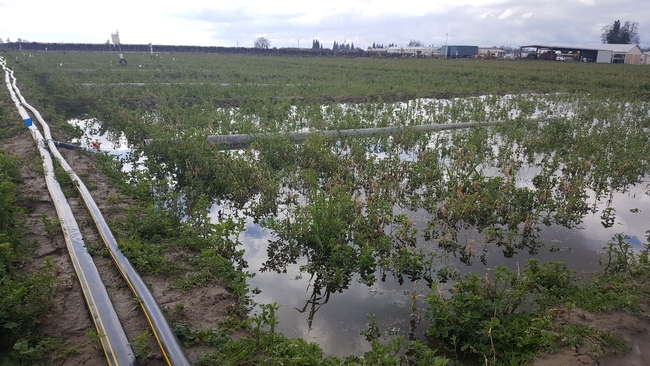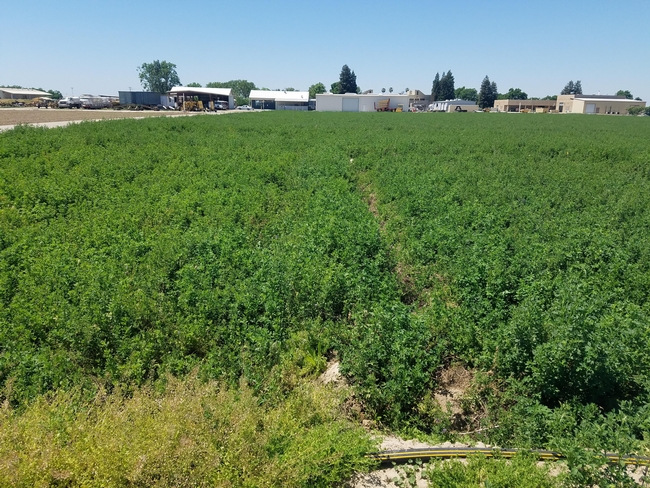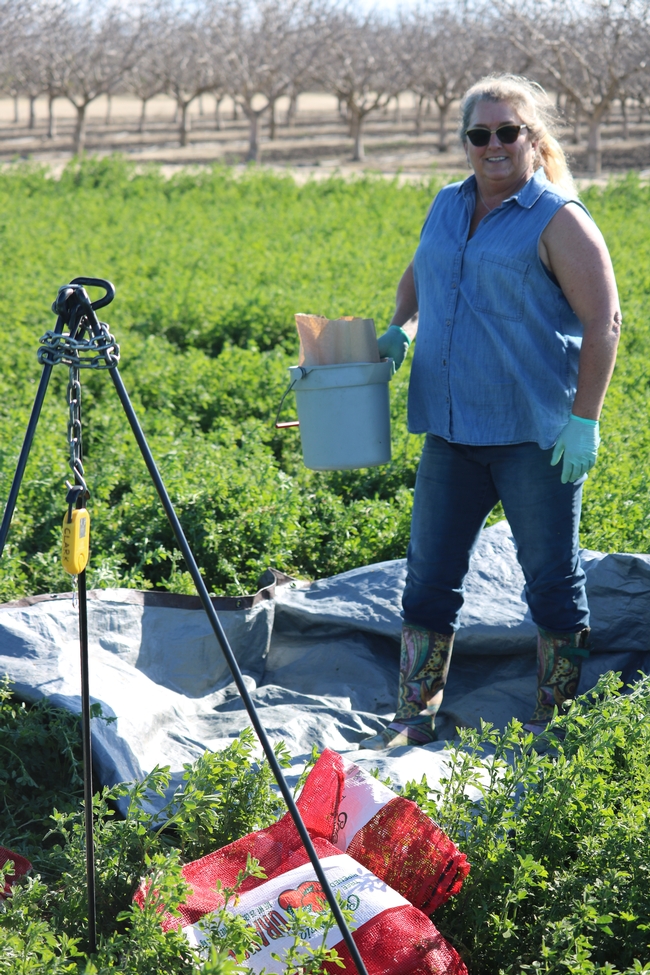
Posts Tagged: Alfalfa
Roundup Ready Alfalfa Injury in the San Joaquin Valley: might it happen under certain conditions?
Roundup Ready technology incorporates genetic resistance to glyphosate into crops and it's an...
Drip irrigation in arid regions can cut greenhouse gas emissions, improve air quality
Study at Desert Research and Extension Center highlights agriculture's sustainability role
Under the blistering sun of Southern California's Imperial Valley, it's not surprising that subsurface drip irrigation is more effective and efficient than furrow (or flood) irrigation, a practice in which up to 50% of water is lost to evaporation.
But a recent study also concludes that drip irrigation can dramatically reduce greenhouse gas emissions from soil – which contribute to climate change and unhealthy air quality in the region – without sacrificing yields of forage crops alfalfa and sudangrass.
“It was really exciting to see,” said lead author Holly Andrews, a National Science Foundation postdoctoral fellow at the University of Arizona. “The crop yield was at least maintained and in some cases increased, but the water use and gaseous emissions were especially decreased under drip irrigation.”
Desert REC crucial to collecting data
Andrews and her colleagues gathered data from field studies at University of California Agriculture and Natural Resources' Desert Research and Extension Center, a crucial hub of desert agriculture research for more than 100 years. Studies in that context are increasingly important, as much of California and the Southwest becomes hotter and drier.
“We already have this history of looking at drip irrigation at this site, so our study was trying to build on that,” said Andrews, who lauded Desert REC's facilities and staff.
In their study published in Agriculture, Ecosystems & Environment, researchers found that – in comparison to furrow irrigation – drip irrigation in alfalfa slashed per-yield soil carbon dioxide emissions by 59%, nitrous oxide by 38% and nitric oxide by 20%.
Nitrous oxide is a greenhouse gas with nearly 300 times more warming potential as carbon dioxide, and nitric oxide is a precursor to ozone and major contributor to air pollution.
While drip irrigation only decreased water demand 1% in alfalfa, the practice led to a substantial 49% decrease in irrigation for sudangrass. For more fertilizer-intensive sudangrass, drip irrigation also reduced soil emissions of nitrous oxide by 59% and nitric oxide by 49% – the result of drip irrigation making those fertilizers more efficient.
Water management can help mitigate climate change
Studying alfalfa and sudangrass – forage crops with very different fertilizer requirements – was a strategic choice by the researchers. They are number one and number three on the list of most widely grown crops by acreage in the Imperial Valley (Bermudagrass, another forage crop, is number two).
With so much land dedicated to producing these crops, the adoption of drip irrigation at scale could deliver significant benefits to residents' health and quality of life.
“The thought that saving water can increase yields while lowering the emission of trace gases that affect regional air quality and Earth's climate is quite encouraging,” said Pete Homyak, an assistant professor of environmental sciences at UC Riverside who contributed to the study. “This is especially true for the Imperial Valley, an arid region where water is a limited resource and where residents are exposed to bad air quality.”
Homyak, who is affiliated with UC ANR through UC Riverside's Agricultural Experiment Station, said that this study illustrates how changes in water management can substantially mitigate agricultural impacts on the environment.
The study findings should encourage growers to replace furrow irrigation systems with drip irrigation infrastructure – especially in combination with financial incentives from the state, such as cap-and-trade and carbon credit programs, that can help defray high installation costs.
“It really is worthwhile if you're thinking sustainability and environmental activism in how agriculture can actually support climate change mitigation,” Andrews explained. “These practices might be a way that we can start to change that picture a little bit – and make agriculture more sustainable by tailoring irrigation management to local climate conditions.”
In addition to Andrews and Homyak, the other study authors are Patty Oikawa, California State University, East Bay; Jun Wang, University of Iowa; and Darrel Jenerette, UC Riverside.
Who's Speaking at the UC Davis Entomology/Nematology Seminars?
Talk about a full schedule! Nematologist Shahid Siddique, assistant professor, UC Davis...
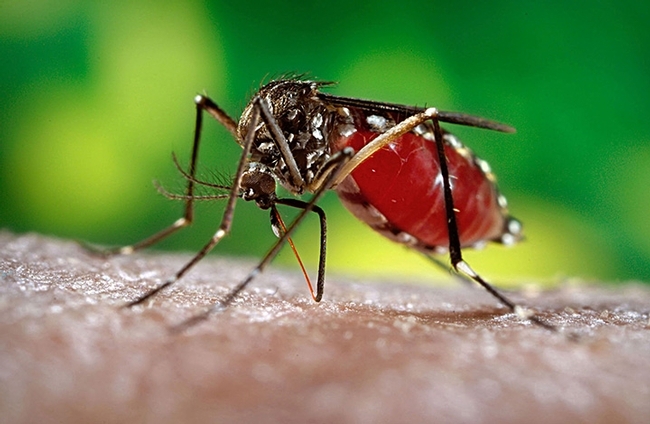
The yellow fever mosquito, Aedes aegypti, will be the topic of a UC Davis Department of Entomology and Nematology seminar on Jan. 12. (Photo courtesy of the Center for Disease Control and Prevention)
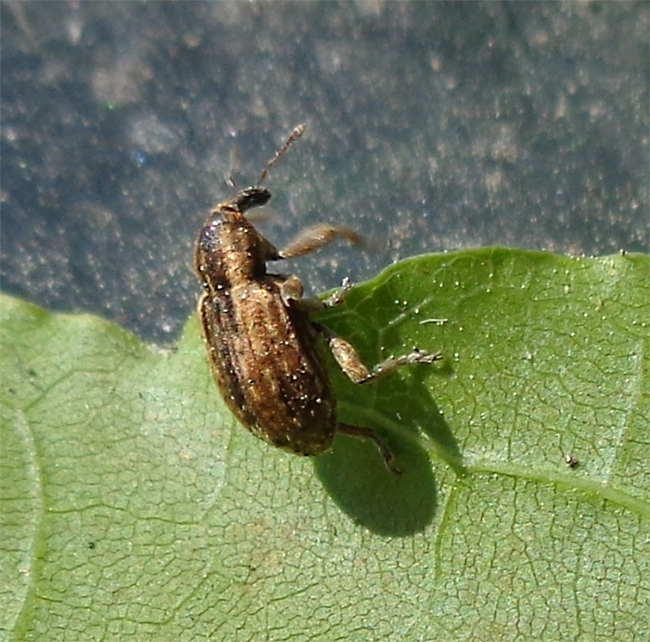
The alfalfa weevil, Hypera postica, will be discussed at the Jan. 5 seminar hosted by the UC Davis Department of Entomology and Nematology. (Wikipedia photo by AfroBrazilian)
California groundwater could get recharging help from alfalfa farms
When California experiences drought due to a lack of rain and snow and the reservoirs don't fill up, people pump water out of the ground to meet their needs. But that practice has its limits, as groundwater aquifers -- underground layers of porous rock -- get depleted, similar to how water squeezes from a sponge.
Many of California's groundwater aquifers, especially in the San Joaquin Valley, are critically overdrafted. They are being depleted faster than they are being recharged by water from the surface percolating through the soil to groundwater. Overdrafting is a concern because California relies on groundwater aquifers as a water storage and supply resource. They must be protected to ensure water security in the future.
To direct surface water back into the aquifers, recharge basins are built, but they are limited in number and volume. Thinking of agricultural fields as potential recharge basins opens the possibility of increasing the number of locations where groundwater aquifers can be recharged.
Alfalfa is a crop that has a unique potential to support this practice because it is widely grown in the San Joaquin Valley and, in many cases, the plants are dormant or semi-dormant during the winter months. University of California researchers Helen Dahlke, Nick Clark and Khaled Bali are investigating how alfalfa copes with additional water in the winter and early spring, when snowmelt runoff occurs, for groundwater recharge.
“We hypothesized that water can be recharged in dormant and early regrowing established alfalfa fields successfully, and with little to no harm to the plants and the productivity as far as the farmer is concerned,” said Clark, a UC Cooperative Extension farm advisor.
The findings have shown great promise for recharging groundwater without negatively impacting alfalfa yield but may diminish quality. “You could do recharge in winter and then turn the water off completely and still get a cutting or two of alfalfa before the summer,” said Bali, a UCCE irrigation water management specialist.
Like Bali, Clark thinks alfalfa growers could use their fields for recharging groundwater while taking steps to limit loss of crop value.
“We did find that the practice of recharging groundwater in alfalfa fields can have a negative impact on the feed quality of the alfalfa when first harvested after the flooding,” Clark said.
“One big recommendation we have is that the alfalfa fields should be in their later years of production so if something disastrous happens, there is not so huge of investment return lost,” said Clark. “There is current research being conducted by UC Cooperative Extension specialists Dan Putnam and Khaled Bali examining practical solutions on the farm level that growers can implement to minimize the risk of damage to alfalfa when also flooding fields for groundwater recharge.”
Clark emphasized that farmers face incredibly complex water-management issues today. The drivers that influence their decisions reach far beyond the farm, so he collaborates with UC Davis professor Helen Dahlke, who studies integrated hydrologic sciences.
“It requires an approach from multiple disciplines to address that complexity,” he said. “Helen brings hydrological expertise, while I can focus on agronomy. So the information we provide is more holistic and relevant on a larger scale, but still practical and applicable for farmers.”
Grower input on the research findings has been critical to their success. “With their feedback, we were able to reform some of the project methodologies to achieve results that were even more relevant to the local conditions,” said Clark.
With the prolonged drought, innovations in groundwater recharge are becoming more crucial. Future research will continue to focus on how growers can use their land in multifaceted ways to improve California's water sustainability far into the future.
Day 5 of National Pollinator Week: The Leafcutter Bee
Day 5 of National Pollinator Week: Meet the leafcutter bee, family Megachilidae. It's a...
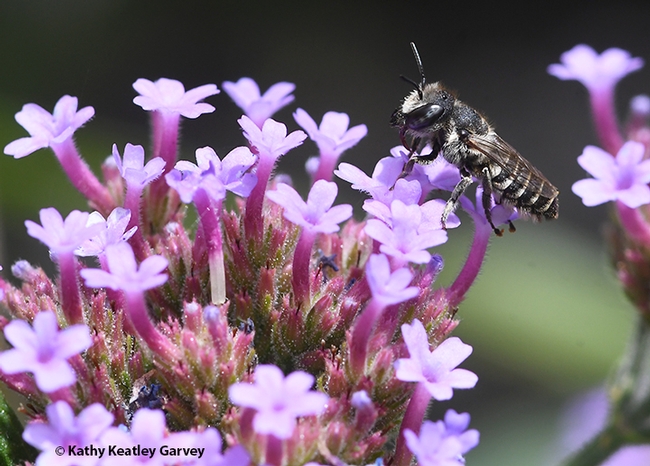
A leafcutter bee (family Megachilidae) foraging on Verbena in Vacaville, Calif. (Photo by Kathy Keatley Garvey)

